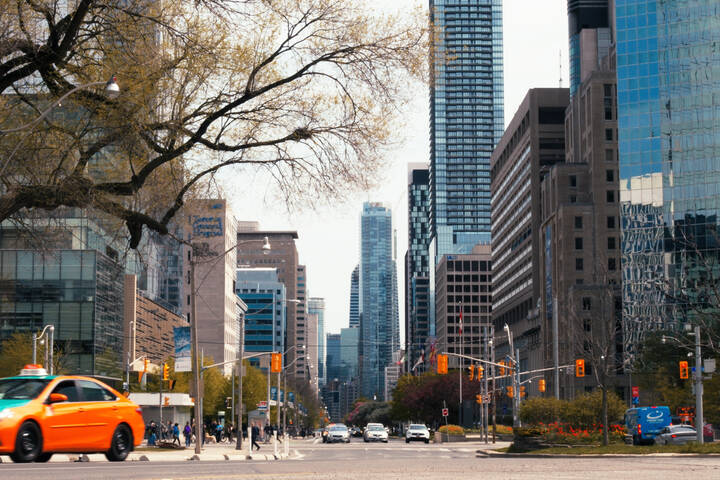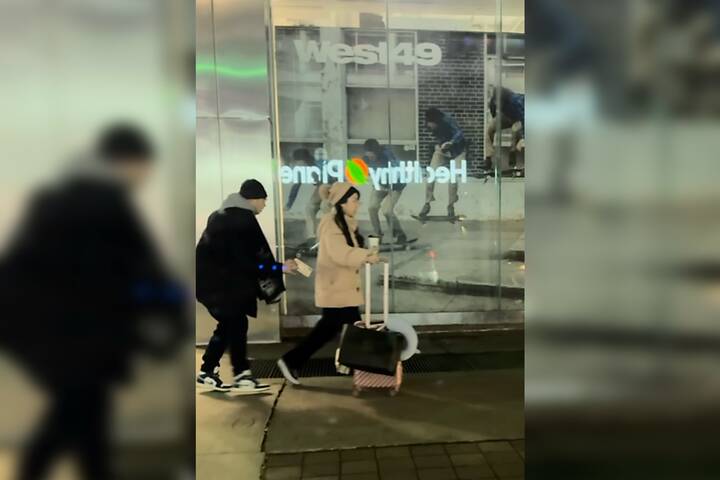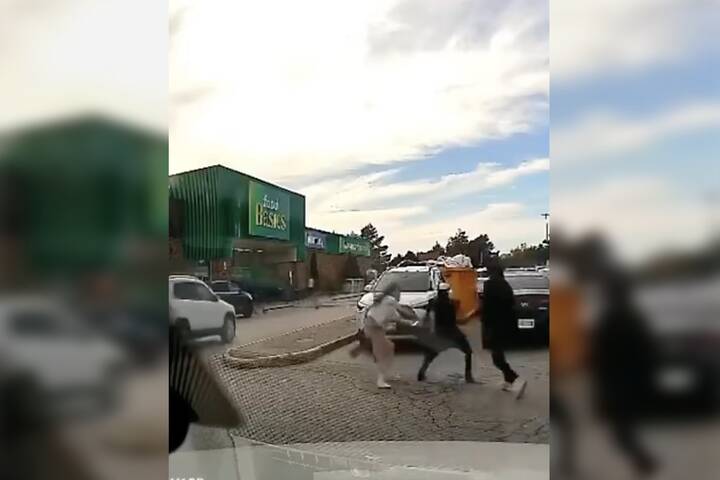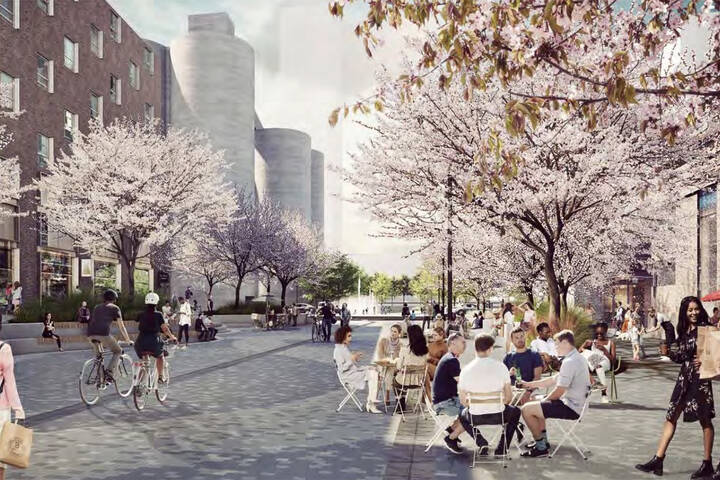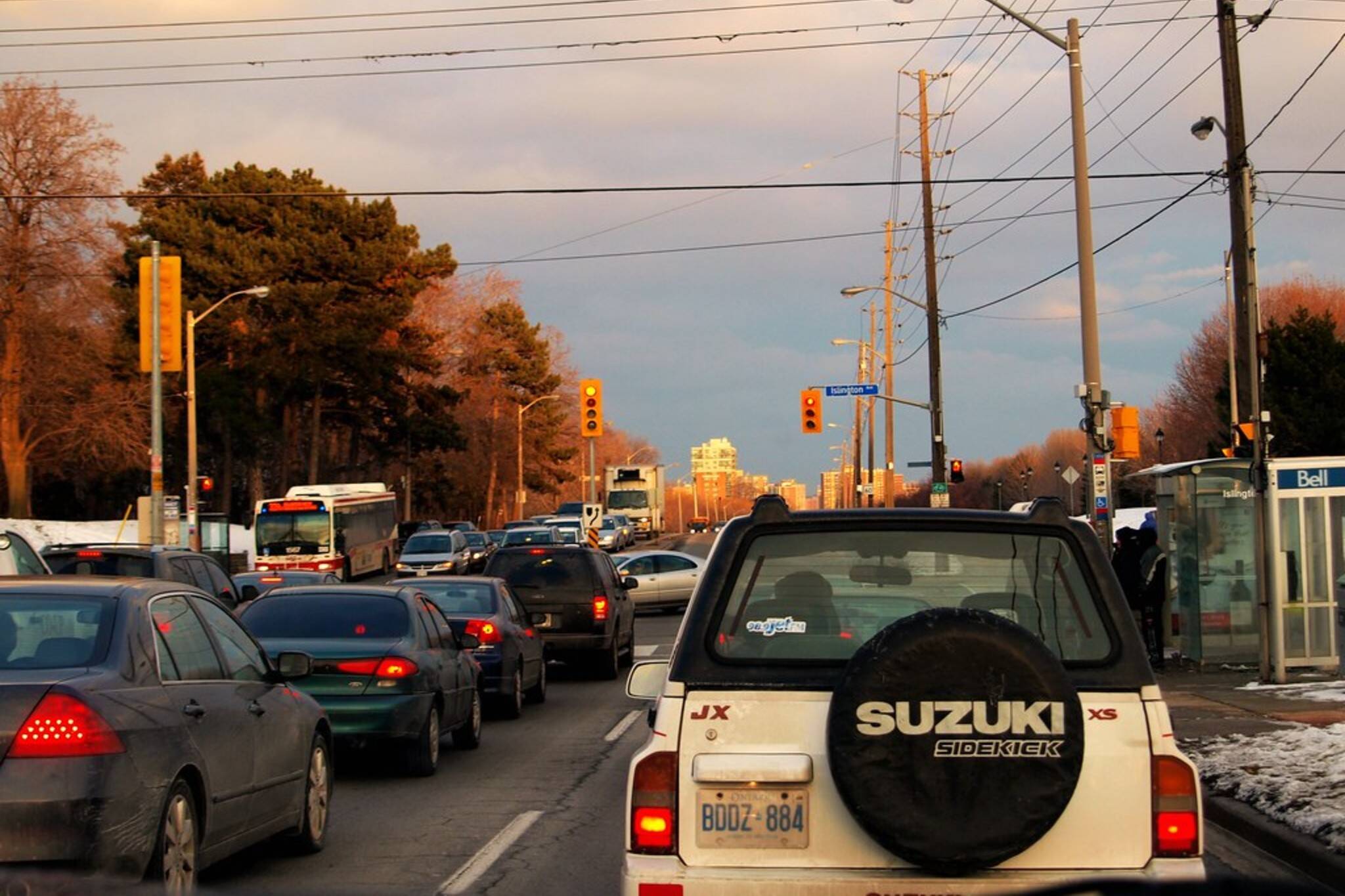
Turning right at red lights could soon be banned at more intersections in Toronto
While Toronto hasn't yet joined Montreal and New York City in the club of major cities where turning right on a red light is completely banned, it seems the city is looking into introducing the restriction at a number of additional intersections to improve safety for cyclists and pedestrians.
A report submitted to the infrastructure and environment committee by transportation services at the end of November responds to several road safety requests made by city council as a part of of the Vision Zero 2.0 Road Safety Plan, and it includes various recommendations including a Right Turn on Red Prohibition Strategy.
"Right turn on red (RTOR) prohibitions may improve safety for some pedestrians and cyclists at intersections by restricting vehicles facing a red signal from turning right across the path of pedestrians or cyclists having the right-of-way," reads the report.
Historically, according to the report, roughly 2 per cent of serious injury or fatal collisions with pedestrians and 4 per cent of serious injury or fatal collisions with cyclists have been with a vehicle turning right on a red signal.
As a result, transportation services has begun assessing strategic implementation of RTOR prohibitions, including an assessment of historical collision patterns and conflicts between right-turning vehicles and pedestrians/cyclists, and a prioritization of intersections with geometric and operational conditions that typically lead to conflicts between right turning drivers and vulnerable road users.
And while blanket city-wide ban on RTOR has been considered, the assessment found that this would create potential safety benefits at some locations but could result in less safe conditions for people walking and cycling at others.
"Prohibiting the movement of right-turning vehicles during the red phase of a traffic signal inevitably concentrates the entire volume of right-turning vehicle demand to the green phase of the signal," states the report.
"At some locations, introducing RTOR prohibitions can result in less safe conditions by shifting right-turn conflict to crossings with higher volume pedestrian and cyclists. Moreover, vehicles pick up more speed as they complete their turn and approach pedestrians or cyclists crossing with the green signal."
Staff have therefore developed a strategy to help identify intersections that would benefit from RTOR prohibitions, and the goal is to start off with 15 intersections throughout the city and evaluate the results before expanding the strategy.
Locations that would be considered for the prohibition include those with a historic trend of collisions or conflicts between people driving and walking/cycling observed during a RTOR movement, and skewed intersections where sightline limitations may result in the inability to make right-turn movements safely while noticing and reacting to the presence of crossing vehicles and pedestrians/cyclists.
Intersections with RTOR movements that could potentially conflict with opposing dual left-turn movements without sufficient receiving lanes to separate the two movements would also be considered, as well as intersections with a combination of operational parameters that increase the exposure of pedestrians and cyclists (i.e. locations where crossing pedestrians and cyclists significantly out-number right-turning vehicles, particularly trucks).
The very first intersection proposed to receive RTOR prohibitions is Keele Street at York Boulevard/Canarctic Drive for southbound traffic, and additional proposed RTOR prohibitions will be presented in reports to individual community councils in the coming months.
Transportation services also meanwhile looked into the impact of driver frustration on road safety and how RTOR prohibitions and other changes to roadways that delay traffic have cumulatively impacted travel times and delays in the city.
"Drive aggression can manifest itself in varying degrees: from cursing and honking to behaviours that could impact safety of other road users. However, the literature review is inconclusive on the degree to which driver stress impacts such behaviours," reads the report.
"The review did not find evidence that driver frustration from features such as RTOR prohibitions or speed limit reductions, result in increased safety concerns."
This item, which also includes assessments and recommendations on other road safety proposals including major arterial speed limit reductions, designation of additional Community Safety Zones at private high schools and more, was adopted by the infrastructure and environment committee with amendments on Dec. 1, and it will be considered by city council on Wednesday, Dec. 16.
Latest Videos
Latest Videos
Join the conversation Load comments

